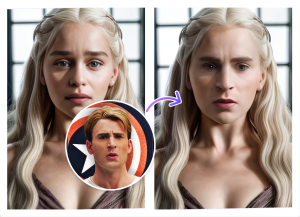Introduction
Face swap technology has gained immense popularity in recent years, allowing users to seamlessly replace one person's face with another's in images and videos. This technology has evolved significantly and is used for various purposes, from entertainment to deepfake creation. In this article, we will delve into the accuracy of face swap technology, exploring its capabilities, limitations, and practical considerations.
Accuracy in Face Swapping
Precision in Facial Mapping
Face swap technology has become remarkably accurate in mapping and overlaying one person's face onto another. This precision is achieved through complex algorithms that analyze facial features, including eyes, nose, mouth, and contours. Advanced machine learning models are trained on vast datasets to ensure accurate recognition and alignment.
Power and Efficiency
The accuracy of face swapping is closely tied to the computational power available. High-performance GPUs and CPUs can process image data faster and with greater precision. Modern hardware accelerators and cloud computing services have greatly improved the efficiency of face swap applications.
Cost and Budget
The cost of achieving high accuracy in face swap technology can vary widely. Powerful GPUs and specialized software may come at a significant expense. For professionals and studios, investing in top-tier equipment and software may be necessary, but individuals with budget constraints can still access user-friendly face swap apps and software with reasonable accuracy for free or at a lower cost.
Speed and Performance
The speed at which face swap technology processes images or videos can impact its accuracy. Faster processing allows for real-time face swapping, making it suitable for live broadcasts, video chats, and interactive experiences. Slower processing may result in less precise swaps or require post-processing to improve accuracy.
Quality and Material
The quality of source images plays a crucial role in the accuracy of face swapping. High-resolution and well-lit photos or videos yield better results. Low-quality or poorly-lit source material can lead to inaccurate facial mappings and less convincing swaps.
Lifespan and Age Considerations
Face swap technology is generally more accurate when applied to individuals of similar ages. Swapping a young face onto an elderly person or vice versa can be challenging due to differences in skin texture, wrinkles, and facial structure. Accuracy may decrease as the age gap between the source and target individuals widens.

Advantages and Disadvantages
Advantages
- Time-saving: Face swap technology can save hours of makeup and prosthetic work in film and television production.
- Creative freedom: It offers creative possibilities for entertainment and art projects.
- Realistic results: When done well, face swaps can be highly convincing and entertaining.
Disadvantages
- Ethical concerns: The technology is often associated with deepfakes and privacy issues.
- Quality variation: Accuracy can vary depending on the software, hardware, and source material.
- Learning curve: Advanced face swapping techniques may require significant expertise and time investment.
Conclusion
Face swap technology has come a long way in terms of accuracy, driven by powerful hardware, efficient algorithms, and machine learning advancements. However, achieving the highest level of accuracy may come at a substantial cost and require specialized equipment. Users should carefully consider their objectives, budget, and source material quality when exploring the capabilities of face swap technology.
For more information on face swap technology and its applications, visit Face Swap App.
